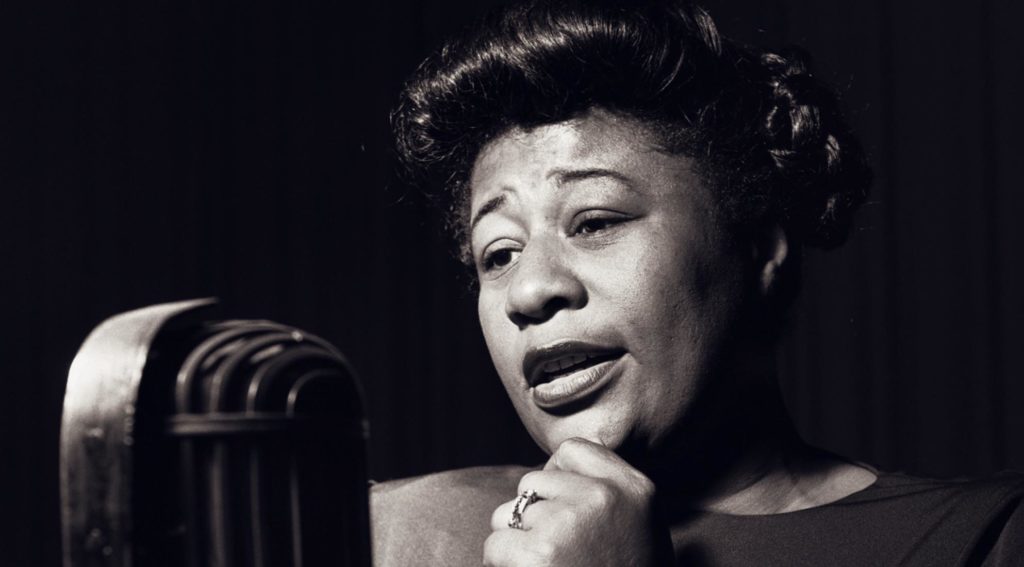A pioneer of jazz, Louis Armstrong was the first important performer to emerge from the genre. And later, Louis Armstrong became the most influential musician in the history of music. Armstrong was a virtuoso trumpet player. His music, beginning with the studio recordings he made in the 1920s with the famous Hot Five and Hot Seven ensembles, charted the future of jazz in creative, emotionally charged improvisation.
Jazz fans revere him for this. But Armstrong has also become a significant figure in popular music. All because of his pronounced baritone singing and attractive personality. He demonstrated his talents in a series of vocal recordings and roles in films.
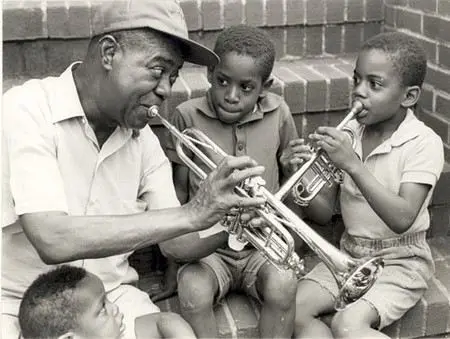
He survived the bebop period of the 40s, becoming more and more loved around the world. By the 50s, Armstrong was gaining widespread recognition as he traveled throughout the United States. This is how he earns the nickname "Ambassador Sutch". His rise in the 60s with hit records such as the 1965 Grammy-winning “Hello Dolly” and the 1968 classic “What a Wonderful World” solidified his legacy as a musical and cultural icon in the music world.
In 1972, a year after his death, he received the Grammy Lifetime Achievement Award. Likewise, many of his most influential recordings, such as 1928's West End Blues and 1955's Mack the Knife, have been inducted into the Grammy Hall of Fame.
Childhood and the first passion for the music of Louis Armstrong
Armstrong was born in 1901 in New Orleans, Louisiana. He had a difficult childhood. William Armstrong, his father, was a factory worker who left the family shortly after the boy was born. Armstrong was raised by his mother, Mary (Albert) Armstrong, and his maternal grandmother. He showed an early interest in music, and the dealer he worked for as an elementary school student helped him buy a cornet. On this instrument, Louis later learned to play quite well.
Armstrong left school at age 11 to join an informal band, but on December 31, 1912, he fired a pistol during New Year's celebrations and was sent to a reform school. There he studied music and played the cornet and glass beads in the school band, and eventually became its leader.
He was released on June 16, 1914 and then the musician was engaged in physical labor, trying to establish himself as a musician. He was taken under the wing of cornetist Joe "King" Oliver, and when Oliver moved to Chicago in June 1918, Armstrong replaced him in the Kid Ory band. In the spring of 1919, he moved to the Fate Marable group, remaining with Marable until the autumn of 1921.
Armstrong moved to Chicago to join Oliver's group in August 1922 and made his first recordings as a member of the group in the spring of 1923. There he married Lillian Harden, a pianist in Oliver's band, on February 5, 1924. She was the second of his four wives. With her help, he left Oliver and joined Fletcher Henderson's group in New York, staying there for a year, then returning to Chicago in November 1925 to join his wife's Dreamland Syncopators. During this period, he switched from cornet to trumpet.
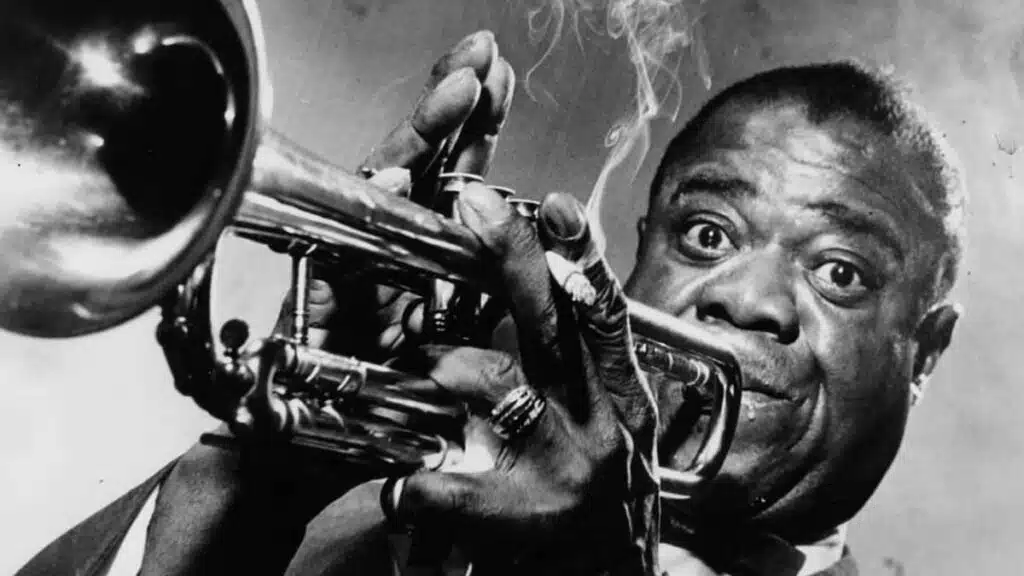
Louis Armstrong: gaining popularity
Armstrong received enough individual attention to make his debut as a leader on November 12, 1925. Under a contract with OKeh Records, he began making a series of studio band-only recordings called Hot Fives or Hot Sevens.
He performed in concert with orchestras led by Erskine Tate and Carroll Dickerson. The Hot Fives recording of "Muskrat Ramble" gave Armstrong a hit on the Top 1926 in July XNUMX. The Hot Fives also featured Kid Ory on trombone, Johnny Dodds on clarinet, Lillian Harden Armstrong on piano, and Johnny St. Cyr on banjo.
By February 1927, Armstrong was famous enough to lead his own Louis Armstrong & His Stompers group at Chicago's Sunset Cafe. Armstrong did not function as a band leader in the usual sense, but instead usually just gave his name to established bands. In April, he reached the top of the charts with his first vocal recording "Big Butter and Egg Man", a duet with May Alix.
He became the star soloist in Carroll Dickerson's band at the Savoy Ballroom in Chicago in March 1928, and later became the band's frontman. The single "Hotter Than That" hit the Top 1928 in May XNUMX, followed by "West End Blues" in September, which later became one of the first recordings to appear in the Grammy Hall of Fame.
Armstrong returned to New York with his group to attend Connie's Inn in Harlem in May 1929. He also began performing in the orchestra of the Broadway revue Hot Chocolates, and gained popularity with his performance of the song "Ain't Misbehavin'". In September, his recording of this song entered the charts, becoming a top ten hit.
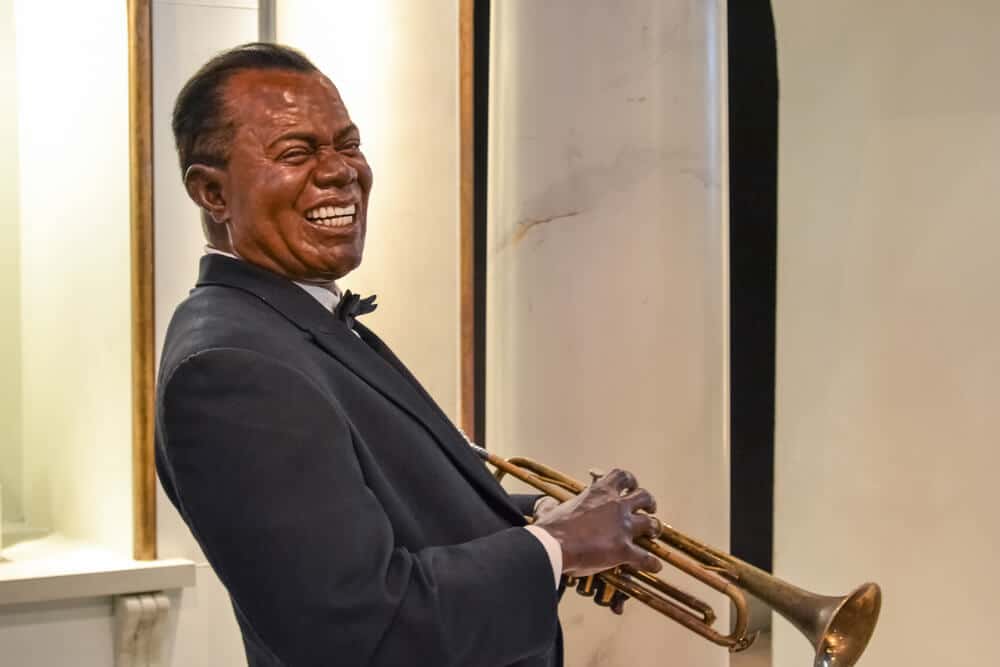
Louis Armstrong: constant moving and touring
In February 1930, Armstrong performed with the Louis Russell Orchestra for a tour of the South, and in May traveled to Los Angeles, where he led the band at Sebastian's Cotton Club for the next ten months.
Then he made his debut in the film "Ex-Flame", released at the end of 1931. By early 1932, he had moved from the "racial music" oriented OKeh label to his more pop-oriented Columbia record label, for which he recorded several Top 5 hits: "Chinatown, My Chinatown" and "You Can Depend on Me", followed by the March hit "All of Me" in March 1932 and another single "Love, You Funny Thing" hit the charts that same month.
In the spring of 1932, Armstrong returned to Chicago to perform with a group led by Zilner Randolph; the group then toured all over the country.
In July, Armstrong went on a tour of England. He spent the next few years in Europe, and his American career was supported by a series of archival recordings, including the top ten hits "Sweethearts on Parade" (August 1932; recorded December 1930) and "Body and Soul" (October 1932; recorded in October 1930).
His best version of "Hobo, You Can't Ride This Train" hit the top of the charts in early 1933. The single was recorded on Victor Records.
Louis Armstrong: Return to the USA
When the musician returned to the US in 1935, he signed with the newly formed Decca Records and quickly scored a Top Ten hit: "I'm in the Mood for Love"/"You Are My Lucky Star".
Armstrong's new manager, Joe Glaser, set up a band for him. The premiere took place in Indianapolis on July 1, 1935. He toured regularly over the next few years.
He also received a series of small roles in motion pictures. Starting with Penny from Heaven in December 1936. Armstrong also continued recording at Decca Studios. The resulting top ten hits included "Public Melody Number One" (August 1937), "When the Saints Go Marching In" (April 1939) and "You Won't Be Satisfied (Until You Break My Heart)" (April 1946) - last duet with Ella Fitzgerald. Louis Armstrong returned to Broadway in the small musical Swingin' the Dream in November 1939.
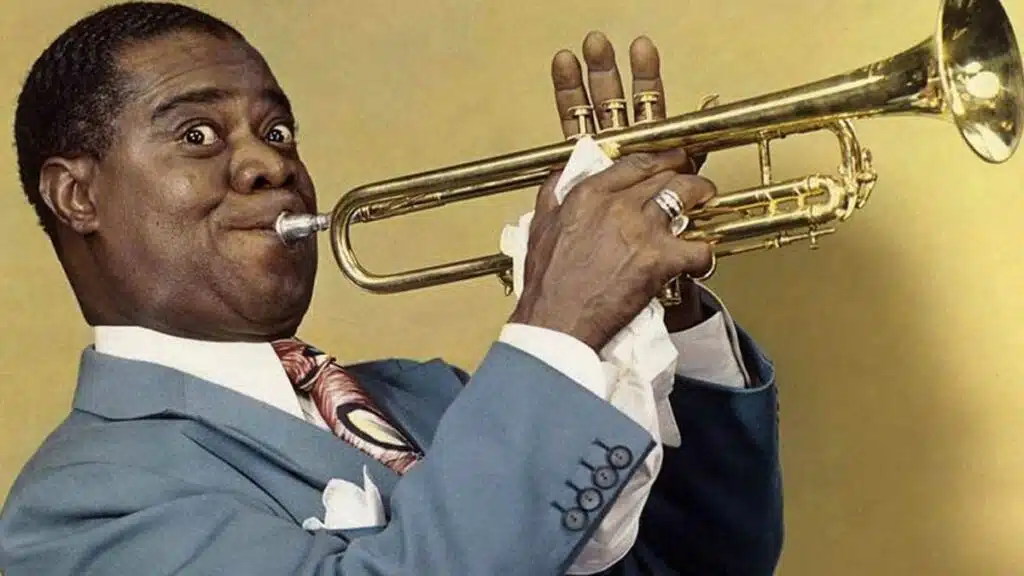
New contracts and hit records
With the decline of swing music in the post-World War II years, Armstrong disbanded his large group and put together a small team called "His All-Stars", which debuted in Los Angeles on August 13, 1947. The first European tour since 1935 took place in February 1948. Then the singer has regularly toured around the world.
In June 1951, his work hit the top ten records - Satchmo at Symphony Hall (his nickname was Satchmo). So Armstrong recorded his first top 10 single in five years. It was the single “(When We Are Dancing) I Get Ideas”.
The B-side of the single contained a recording of the song "A Kiss to Build a Dream On", sung by Armstrong in the film The Strip. In 1993, he gained new popularity when his work was used in the film Sleepless in Seattle.
Armstrong's work with a variety of labels
Armstrong ended his contract with Decca in 1954, after which his manager made the unusual decision not to sign a new contract, but instead to hire Armstrong as a freelancer for other labels.
Titled Satch Plays Fats, a tribute to the Fats Waller, it was a Top 1955 record recorded at Columbia in October 1956. Verve Records signed Armstrong to a series of recordings with Ella Fitzgerald, beginning with the Ella and Louis LP in XNUMX.
Armstrong continued to tour despite a heart attack in June 1959. In 1964, he scored a surprise hit by writing the title track for the Broadway musical Hello, Dolly!, which reached number one in May, after which the song went gold.
Armstrong recorded an album of the same name. It earned him a Grammy for Best Vocal Performance. This success was repeated internationally four years later. With the hit "What a Wonderful World". Armstrong won first place in the UK in April 1968. It didn't get as much attention in the US until 1987. Then the single was used in the movie Good Morning Vietnam. After that, it became a Top 40 hit.
Armstrong was featured in the 1969 film Hello, Dolly! The artist performed the title song in a duet with Barbara Streisand. He began performing less frequently in the late 60s and early 70s.
Louis Armstrong: the setting of a star
The musician died of a heart disease in 1971 at the age of 69. A year later, he was awarded the Grammy Lifetime Achievement Award.
As an artist, Armstrong was perceived by two very different categories of listeners. The first were jazz fans who revered him for his early innovations as an instrumentalist. They were sometimes embarrassed by his lack of interest in later developments in jazz. The second are fans of pop music. Those admired his joyful performances. Especially as a vocalist, but largely unaware of his significance as a jazz musician.
Considering his popularity, long career and extensive label work he has done in recent years, it is safe to say that his work is a masterpiece in various genres of music.


